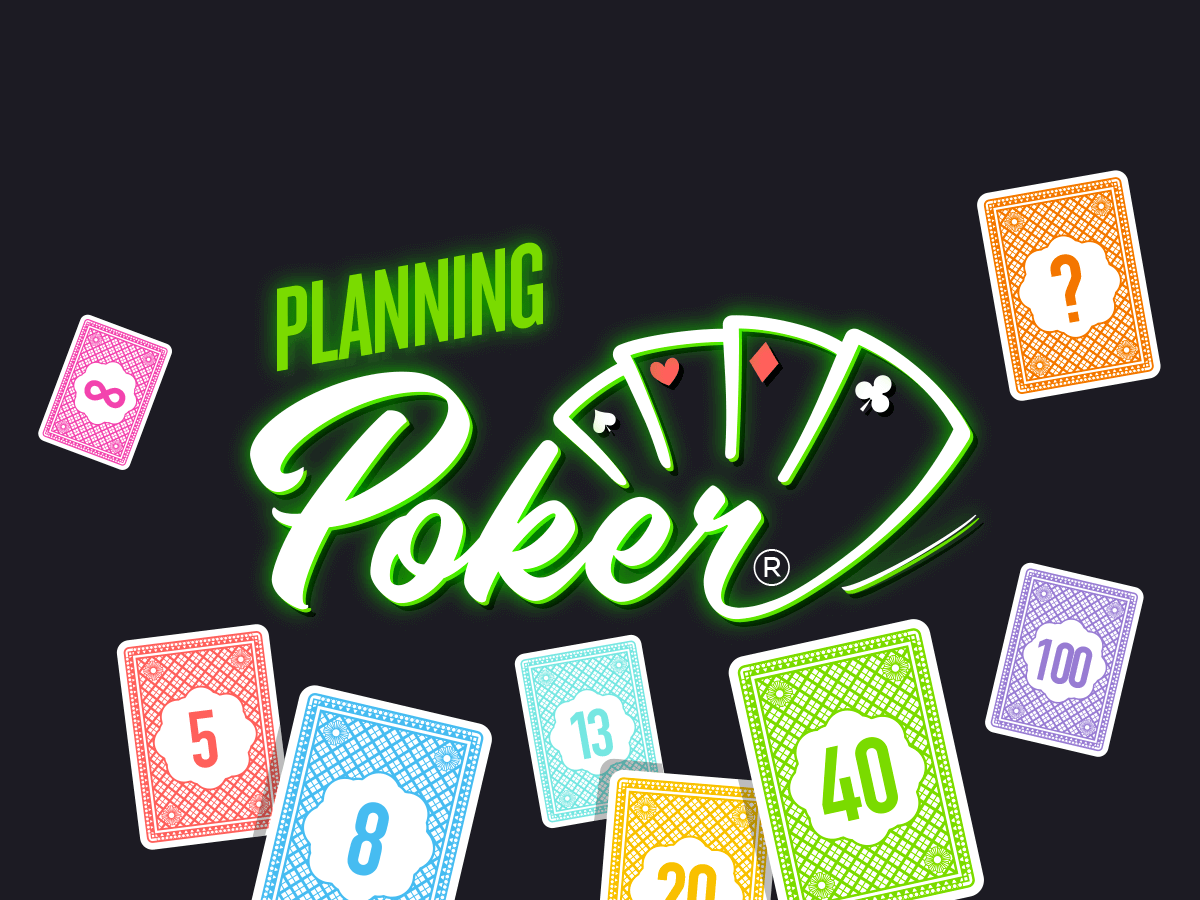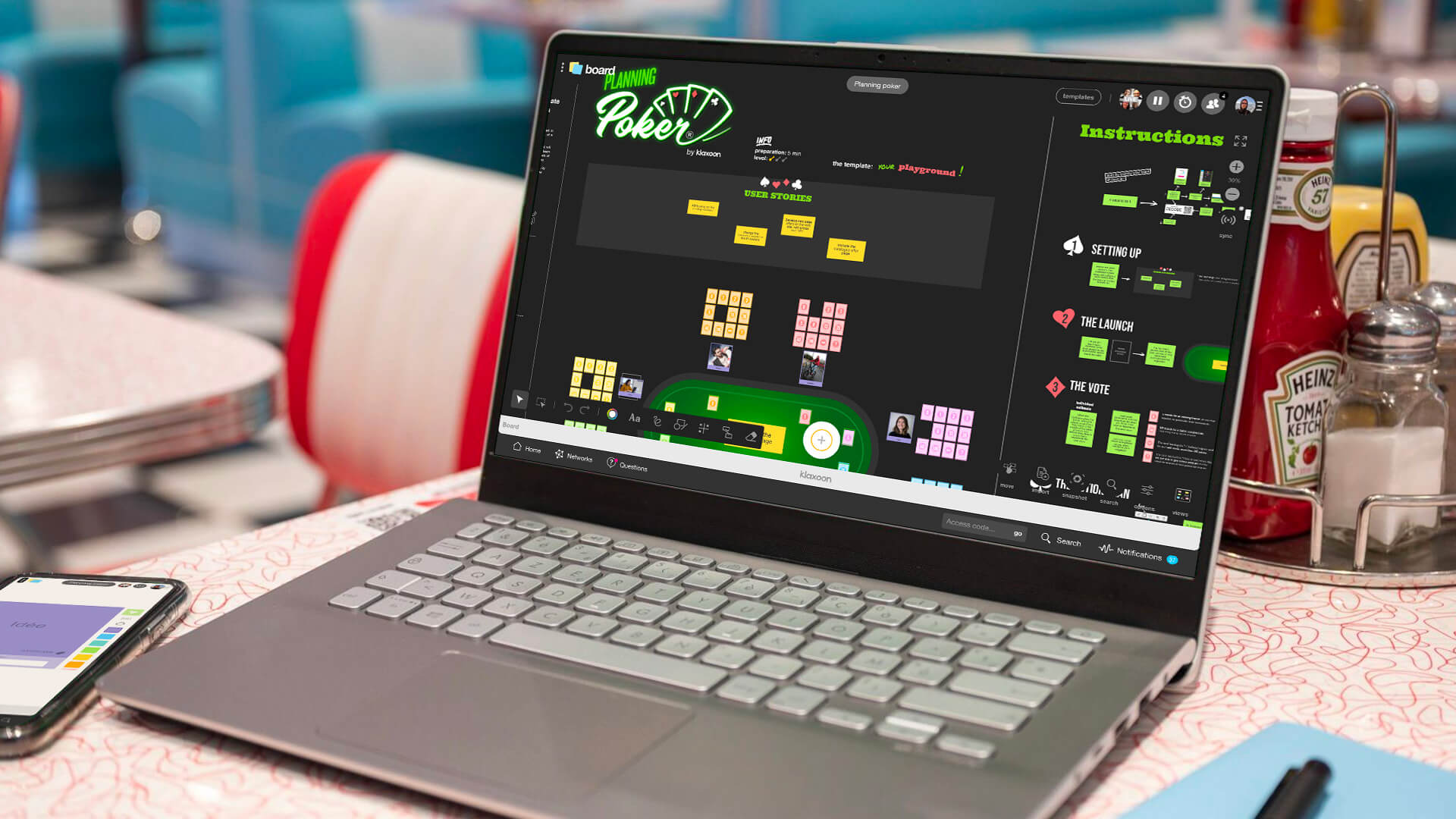Planning Poker: manage your team’s workload with this agile Scrum methodology
Published on February 14, 2025
Planning Poker: manage your team’s workload with this agile Scrum methodology


Are you starting a new project or a new Scrum sprint and looking for a collaborative agile planning method to assess the workload properly? The online Planning Poker template is a fun and perfect tool for this.
Much loved by fans of iterative and collaborative approaches to project management, the agile Scrum methodology is one of the most popular in this field. It’s an agile methodology used in product or feature development, as it involves iterative development cycles called sprints.
Created in 2002, Planning Poker is an agile project management method to assess the complexity of each project or sprint action item, and thus the team’s workload.
This iterative approach is designed to make project management effective and avoid the tunnel effect observed by teams using traditional V-model project management. It is used by teams of developers, project managers or product owners, to estimate the number of points for each “user story” or scenario using the Fibonacci sequence.


Planning Poker is an opportunity to meet around a virtual game table, and show your best cards to get things done.
Using the Scrum methodology on site, Planning Poker usually takes place as follows:
This step is crucial to estimate the time required to complete the scenario. It‘s on this basis that people will be able to estimate the time required symbolized by the cards containing the numbers from the Fibonacci sequence (1, 2, 3, 5, 8, 13, 21, 34, 55, 89, 144). To make it easier to understand, the main values are usually rounded up or down (20, 30, 60 etc.)
To save time, the people who gave the two most extreme estimates are asked to explain their choice. At the end of their discussion, a new estimate is made. If there is still no agreement after several rounds, the average can be worked out to validate the time required.
The idea is to take a step back as a team, so everyone can add their point of view and experience to give the most accurate estimate possible. With Planning Poker you can use the group's knowledge and get a shared vision of the most important actions to be taken.
In the spirit of continuous improvement, the team effectively determines the velocity of its development cycles. The result? Meeting in person or working remotely, the whole team has a clear vision of their workload and can track project progress.
With the Planning Poker template, you can easily digitize your Planning Poker ritual without making it any less user-friendly or effective.
As with all Klaxoon collaborative templates, start by inviting all your team members to log in to your Board. Then, pin all the scenarios, or “user stories”, that you want to work on, on your whiteboard. Klaxoon’s Board is infinitely customizable and allows you to note ideas however you want: in writing, images, videos, links etc. Participants can add their photo to make it friendlier when working remotely.
In the center of the template, there is a realistic looking poker table, just like in real life. The process works the same way.
The facilitator chooses one of the proposed scenarios, places it in the center of the table and explains it. Then, it's time for discussion to set out the scope of the scenari, the conditions, etc. You can select their length and time these discussions as a group using the timer at the top of the interface.
Then, the facilitator launches the voting phase. Each participant has the same set of cards, the Planning Poker cards, which all display a different value. Use them to estimate the time required and complexity for each scenario (zero for the simplest action and 100 for the most complex). You even have an infinity card for any task you feel is more difficult than 100, as well as a “?” card that you can show when you cannot estimate a task’s complexity. Play Scrum poker with all your team laying their cards at the same time so as not to influence each other!
The collective estimation time shows you whether people agree about the scores, and whether more discussions are needed between the people who laid the most extreme scores. Limit yourself to one or two minutes of discussion, and then vote again. Keep the idea with the highest number of votes, and add it to the idea discussed using the Categories. Now, all you have to do is place this action in the Action Plan area of the template!
Do the same for all the scenarios proposed initially, then determine together, using points, how much effort the team can put in: this is the team's velocity. The total user story estimates must not exceed your velocity. If they do, ask participants to prioritize ideas using the “like” button on the Klaxoon whiteboard. The facilitator acts as an arbitrator and uses the colors to highlight the scenarios that will need to be postponed.
Now you have created your action plan, you can assign actions and connect them to each scenario with the symbol representing two rectangles connected by a line. Feel free to use colors to make actions more visible and assign them collectively to team members.
With the Planning Poker template, you can review all the project actions and estimate the associated workloads as a team. Because the Klaxoon whiteboard is interactive (with the built-in video conferencing tool Live, the Questions tool to quiz one or more participants etc.), the group can hold discussions, everyone can give their opinion about the scenarios and ideas proposed. It's the perfect project management tool to avoid stumbling blocks and overloads as a team!
Get inspired by other templates from the same categories
Unlock your teamwork potential